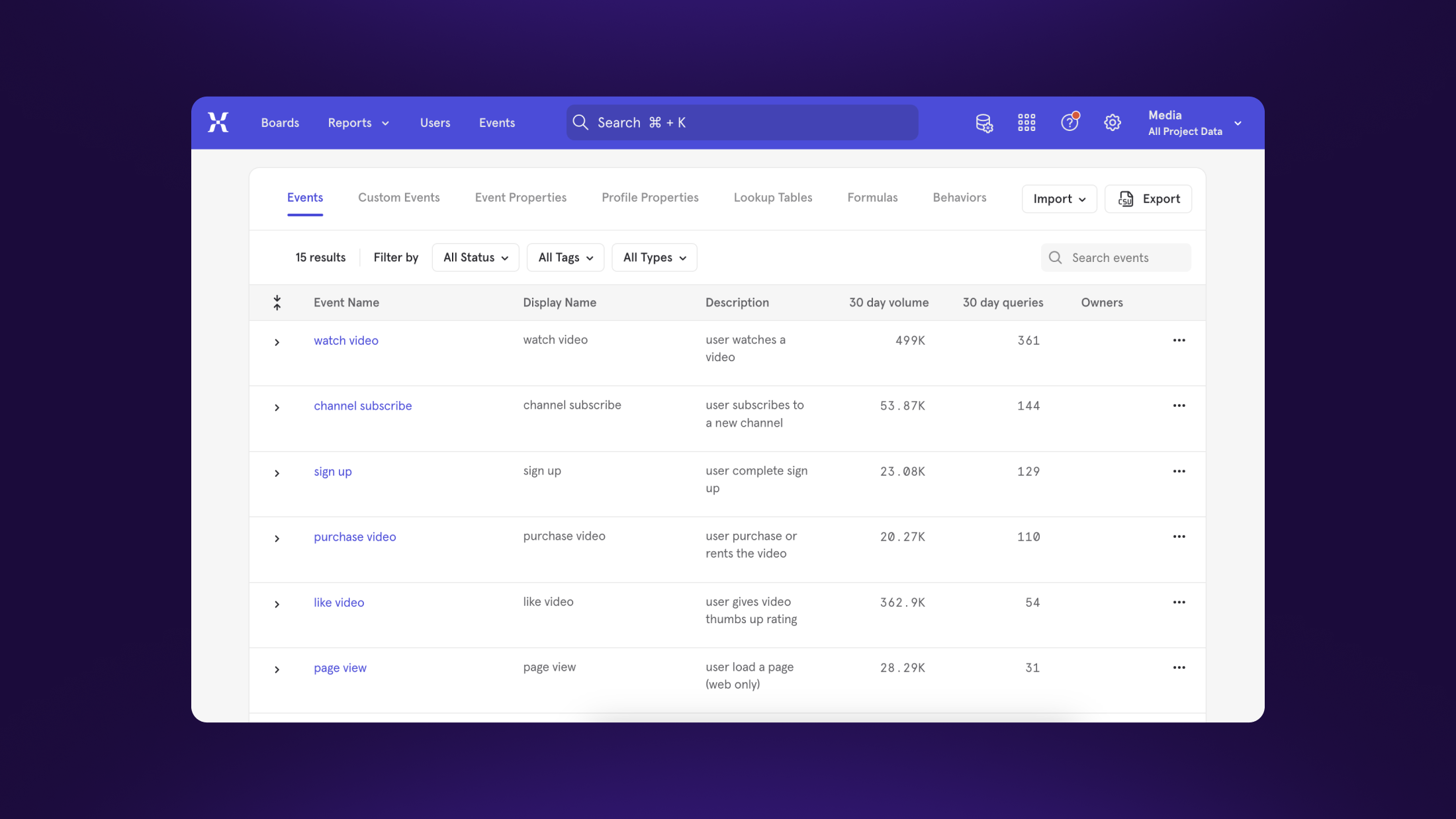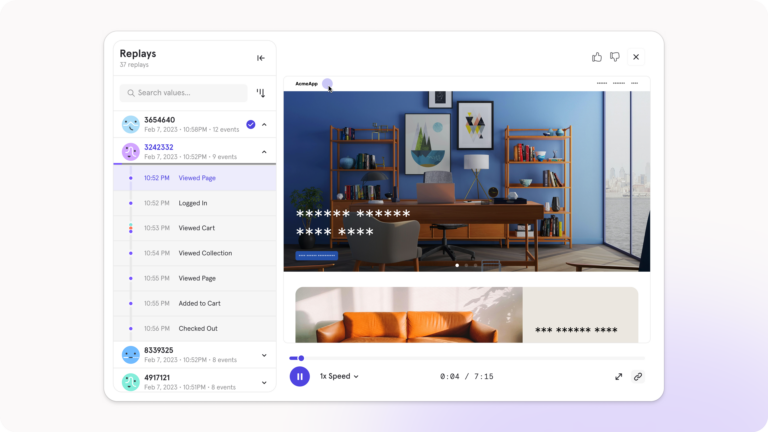
Do I need a tracking plan?

| A product tracking plan, also known as a measurement plan or event data design, is used to ensure that the right events (button clicks, screen views, purchases, etc.) are being tracked in the right way to generate insightful product usage analysis and support business teams. |
Building a product is typically an iterative process. You release something, and after a while, you release an addition or an improvement on it. What becomes helpful in this process is having product usage data in hand to help you decide what is and isn’t working with your users. This is where a good product tracking plan comes into play.
What is a tracking plan?
A product tracking plan is used to ensure that the right events (button clicks, screen views, purchases, etc.) are being tracked in the right way to generate insightful product usage analysis and support business teams. A tracking plan can be implemented by a product analytics solution, like Mixpanel, where tracked events are generated into user behavior reports and other analyses.
Some people call a tracking plan a measurement plan, and I call it an event data design. For me, the design part is central because you design what kind of events you want to track.
How do you build a tracking plan?
So now you’re thinking, “OK, great. I get to design whatever events I want, and that’s a tracking plan? Sounds simple.” That’s technically true, but you’ll want to be far more precise.
You want the events that you track to create really insightful analysis, but if you’re focusing on the wrong events, you may wind up with a huge gap between what you track on the one side and what kind of insights you generate.
So a good event data design, or a tracking plan, makes sure that you track the right things in the right shape to avoid filling up your dashboards with vanity metrics.

For example, if I have a video streaming product, it’s likely unnecessary to track every little click or movement that users make in my app. Even focusing too much on something like an “app opened” event can be misguided—what if users are going into the app and not watching any videos? Instead, starting out by tracking things like what videos are being watched by which cohort of users or which videos are being watched at least 50% of the way through can help you analyze meaningful product usage and build more useful metrics.
When does your product and company need a tracking plan?
If you are a product organization that constantly improves their product based on data input, meaning you release changes to your product way more than just two or three times a year, a tracking plan is obviously going to be very helpful to guide you on what needs to be in your next feature or product update.
But there are more ways a tracking plan can be helpful to a business.
For example, you can also use event data to support growth and sales initiatives. If you want to assess the “quality” of customers you’re acquiring—whether they’re the kind who are using the product as often as expected and finding value in it—event data can help uncover which new customers are the most active or productive. Sales or support can even look at this analysis and reach out to anyone who isn’t thriving in the product and offer help.
When might your product and company not need a tracking plan?
If you’re not constantly iterating on your product, event data may not matter so much to you. You may conduct way more user interviews or have other ways to validate how to improve your product.
There are also ways to get some behavioral analysis without having to design a tracking plan. If you have a website with a good URL structure, page views can be serve as a standard tracking plan. Analytics platforms like Mixpanel can track page views out of the box (and even measure things like sessions) to provide a barebones analysis of how users are moving through a site.
The need for some data
Whether your product and business needs a robust tracking plan or can get by with some qualitative customer and prospect interviews, having data is powerful at any stage. Of course, your data needs can quickly change as products and business needs evolve, so understanding exactly how a product tracking plan can help is key to being able to know when the time is right to get to work on designing one for yourself.
This content originally appeared on my YouTube page. Subscribe for more event data conversations and explainers.






